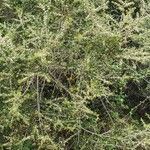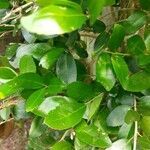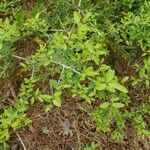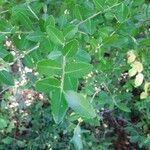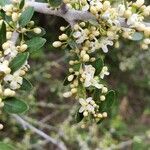A holly. It is a woody evergreen shrub. It grows 2-3 m high. The bark is grey. The leaves are shiny dark green above and paler underneath. They are 2-3 cm long by 6-12 mm wide. The leaves have a blunt tip and a rounded base. There are finely wavy teeth along the edge. The flowers are 5 mm wide. Male and female flowers are on separate plants. The fruit are orange yellow berries.
